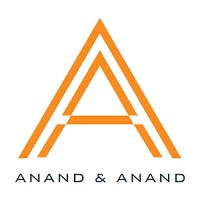By Tusha Malhotra and Pankhuri Malik.
In 2018, in the case of Swapnil Tripathi v Supreme Court of India, the Supreme Court of India had advised that it was time the judicial bodies in India considered modernizing their systems and advancing towards conducting of court proceedings through video conferencing. While the Supreme Court and various High Courts and District Courts in India were equipped with the infrastructure of conducting evidence and other court proceedings through video conferencing, the need to step into the modernized way of conducting hearings had not arisen until March of 2020, when the need for advancement in procedures became pressing due to nationwide lockdowns imposed by the Central Government.
Steps in the wake of COVID-19
In an unprecedented situation, where the COVID-19 virus has mandated that the system of courts in this country be revamped, at least for a short period of time, to ensure that large groups of people are not gathered at any given point of time, till this pandemic passes, the judicial bodies of India promptly modernized their procedures. Physical filing of lawsuits converted to e-filing and arguments and hearings in Court premises transitioned to video conferencing. While many businesses and work places have shut down all over the world, the Justice System does not have the liberty to shut its doors, even temporarily.
Therefore, in order to minimize the spread of the virus and simultaneously hear the most urgent and pressing matters, the Supreme Court of India, took Suo Moto cognizance of the situation and passed guidelines for the hearing of urgent matters through Video Conferencing, in the apex court and its subordinate courts, in the case titled “In Re Guidelines for Court Functioning through Video Conferencing During Covid-19 Pandemic”.
Through these guidelines, the Supreme Court has enabled the “temporary transition” to Video Conferencing and has directed the High Courts to not only choose the modality that suits them best, but also devise the same for the District Courts subordinate to it. In addition to Video Conferencing, the apex Court has also facilitated 24*7 e-filing facilities for litigators.
At the outset, the Apex court observed that Video Conferencing is not new to the procedures of law. A further note was taken about Maharashtra v Praful Desai and the Hon’ble Supreme Court of India held that “developments in technology have opened up the possibility of virtual courts which are similar to physical courts” and recording of evidence through video conferencing would be considered to be as per ‘procedure established by law.’
Therefore, the apex court, while formulating the guidelines, observed that the call of physical distancing is not merely a matter of discretion, but of duty. The Court recognized that the Supreme Court and various High Courts have already employed video conferencing for the dispensation of justice and therefore, it is necessary for the Supreme Court to issue the following directions for the same, under the jurisdiction conferred by Article 142 of the Constitution:
- All measures taken, and that shall be taken, by the Supreme Court and the High Courts in furtherance of the need to reduce physical presence within court premises and to secure functioning of the Court within the guidelines of social distancing shall be considered lawful;
- The Supreme Court and all High Courts are authorized to adopt measures to ensure robust functioning of the judicial system through the use of video conferencing;
- Every High Court is authorised to determine the modalities which are suitable for the temporary transition to the use of video conferencing technologies;
- In case of any complaints, all concerned courts shall maintain a helpline where complaints can be reported during or immediately after the conclusion of the hearing. Any complaint lodged thereafter shall not be entertained;
- Every district court shall adopt the mode of video conferencing prescribed by the respective High Court;
In addition to the above, the Hon’ble Court stipulated the means of redressal for litigants who do not have the means for or access to video conferencing facilities, guidelines for the recording of evidence through video conferencing and prescribed powers to the presiding officer to ensure that the number of persons in a court room is not many.
Read the full article at http://medialawinternational.com/indiaarticle.html
 etc. whilst wrongfully claiming to be part of our firm and making false claims and allegations.
etc. whilst wrongfully claiming to be part of our firm and making false claims and allegations.